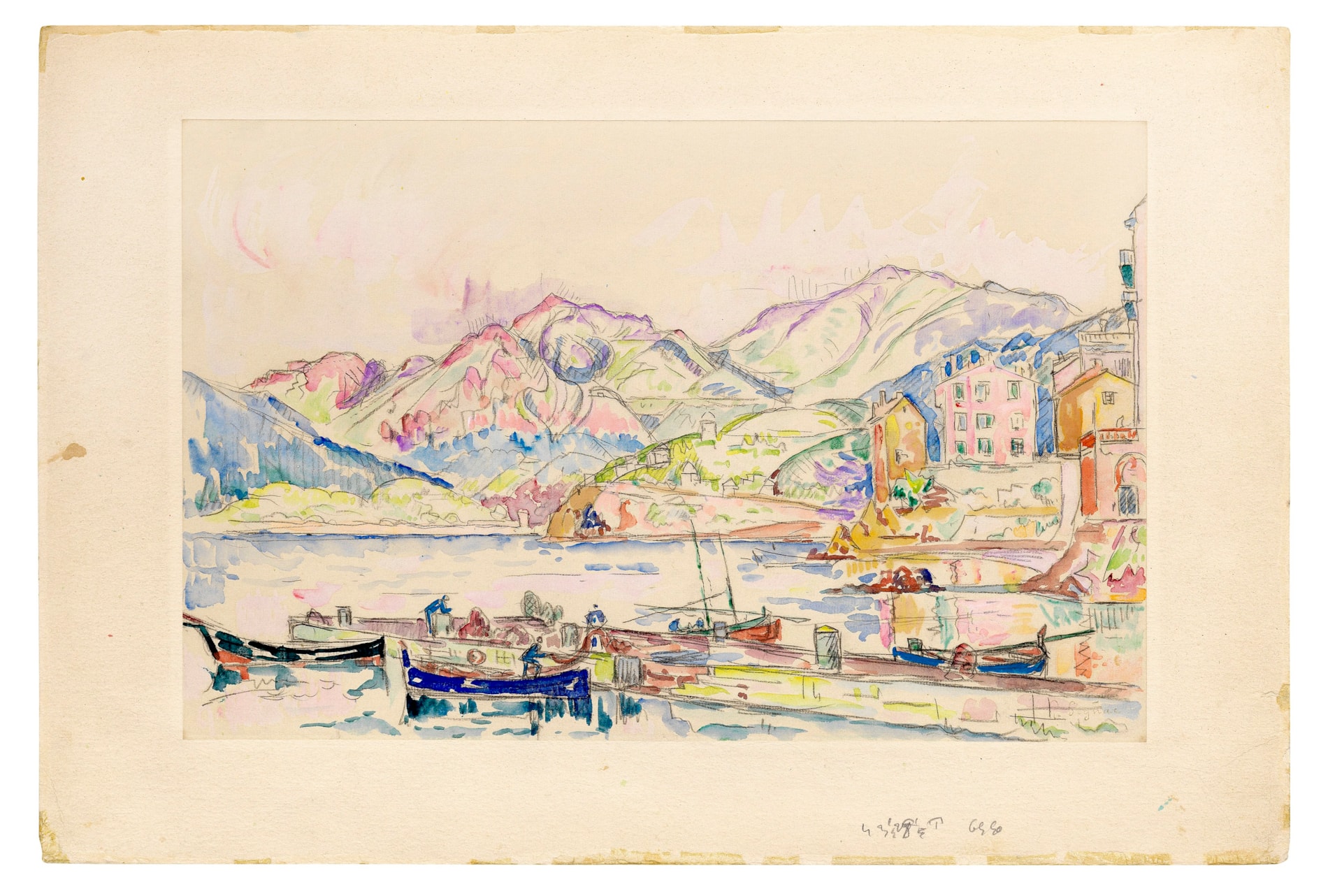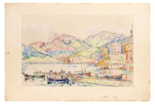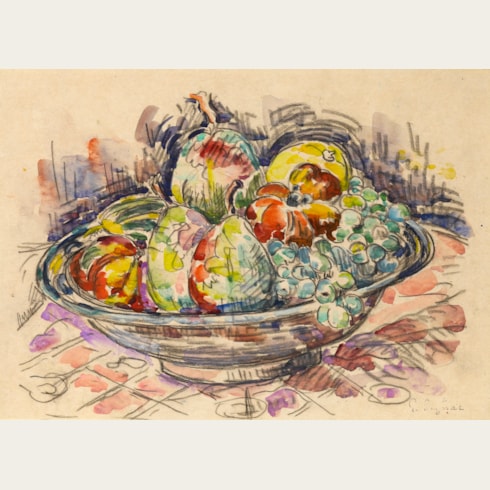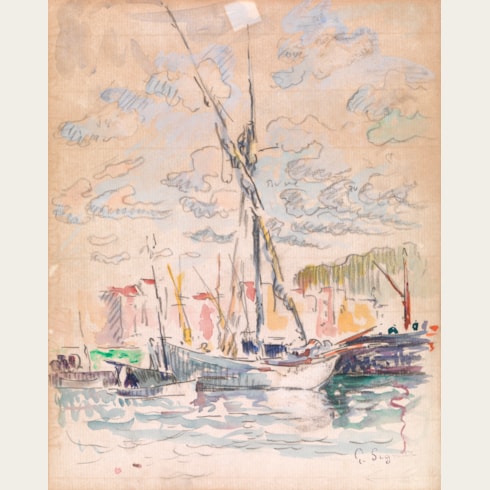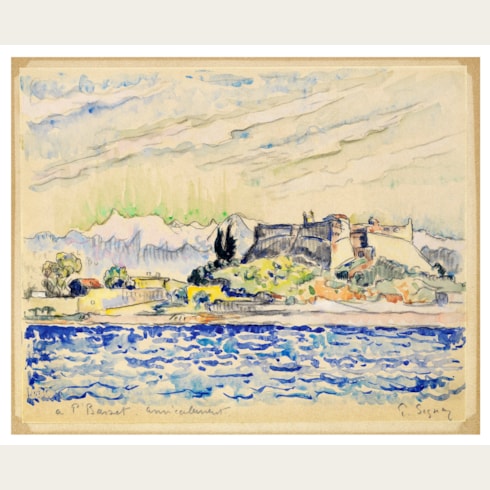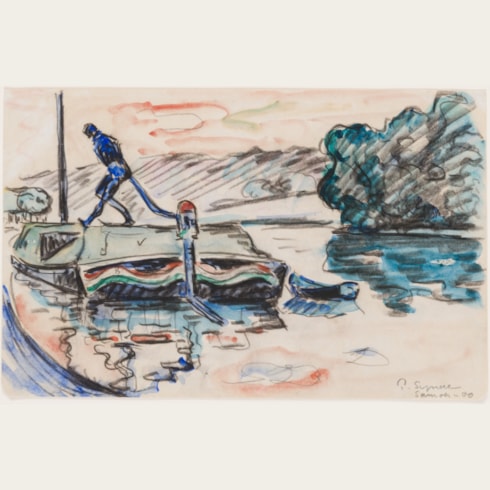Paul SIGNAC
(Paris 1863 - Paris 1945)
View of a Mediterranean Port (The Bay of Ajaccio, Corsica?)
Sold
Pencil and watercolour. Laid down.
Stamped with the estate stamp P. Signac (Lugt 2285b) at the lower right.
279 x 434 mm. (11 x 17 1/8 in.)
Stamped with the estate stamp P. Signac (Lugt 2285b) at the lower right.
279 x 434 mm. (11 x 17 1/8 in.)
This view depicted in this large watercolour has tentatively been identified as the bay of Ajaccio, on the western coast of Corsica. If so, the watercolour would date from 1935, the last year of the artist’s life, when he made his only visits to the island. Signac visited Ajaccio in February 1935, and again on his return to Corsica in May and June. As Marina Ferretti Bocquillon has written of this trip to Corsica, the final journey of Signac’s career, ‘Travelling from one harbor to the next with the energy of a young man, he made his last Mediterranean notes. Only two months before his death on August 15 he had been working without respite on a dazzling series of watercolors.’
Active as a painter, draughtsman, writer and collector, Paul Signac was one of the leading artists of the Neo-Impressionist movement. He came from a wealthy bourgeois family, and as such was able to support the careers of several of his fellow artists as a patron and collector. He became a close friend of Georges Seurat, whose work he first encountered at the inaugural exhibition of the Société des Artistes Indépendants in 1884, and between them the two painters formed the nucleus of the group of artists known as the Neo-Impressionists. Signac would spend the winter working in his Parisian studio, while the summer months were spent painting at a coastal resort, eventually settling in Saint-Tropez from 1892 onwards. In 1904 Henri Matisse spent the summer with Signac at Saint-Tropez, a period that was to have a profound effect on the younger artist.
Signac painted around six hundred canvases as well as a significant body of works on paper, mainly watercolours. As Marina Ferretti Bocquillon has noted, ‘Signac was the neo-impressionist who practiced watercolor most consistently…For him, watercolor was a seductive alternative to the demanding labor of studio painting, a zone of freedom that suited his restless temperament and love of the outdoors. It gradually took over from his work in oil...’
Provenance
Private collection, Paris
Thence by descent.

